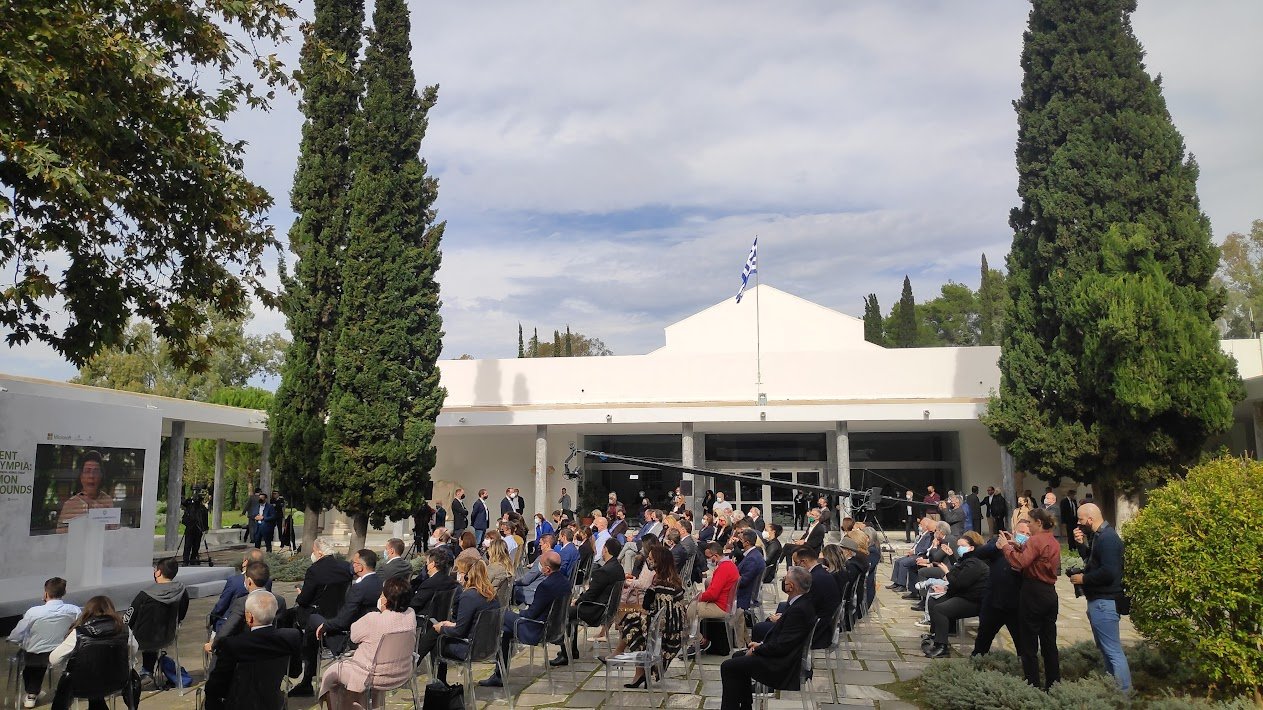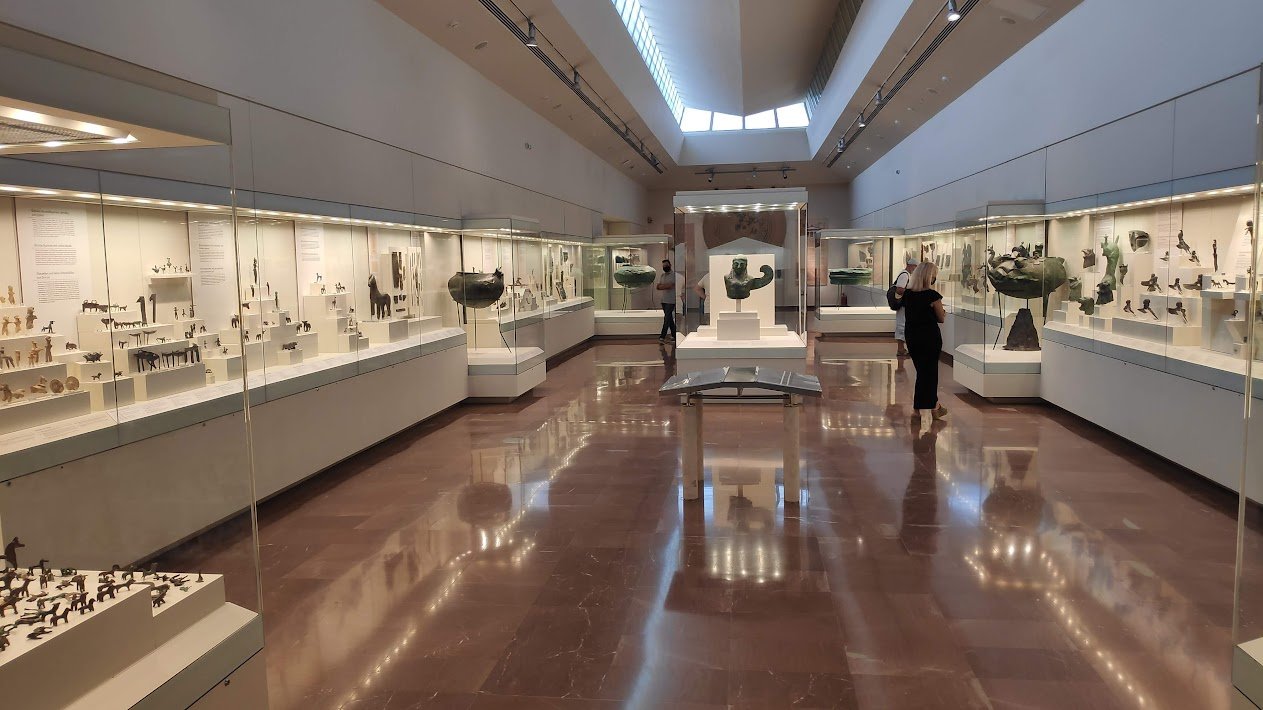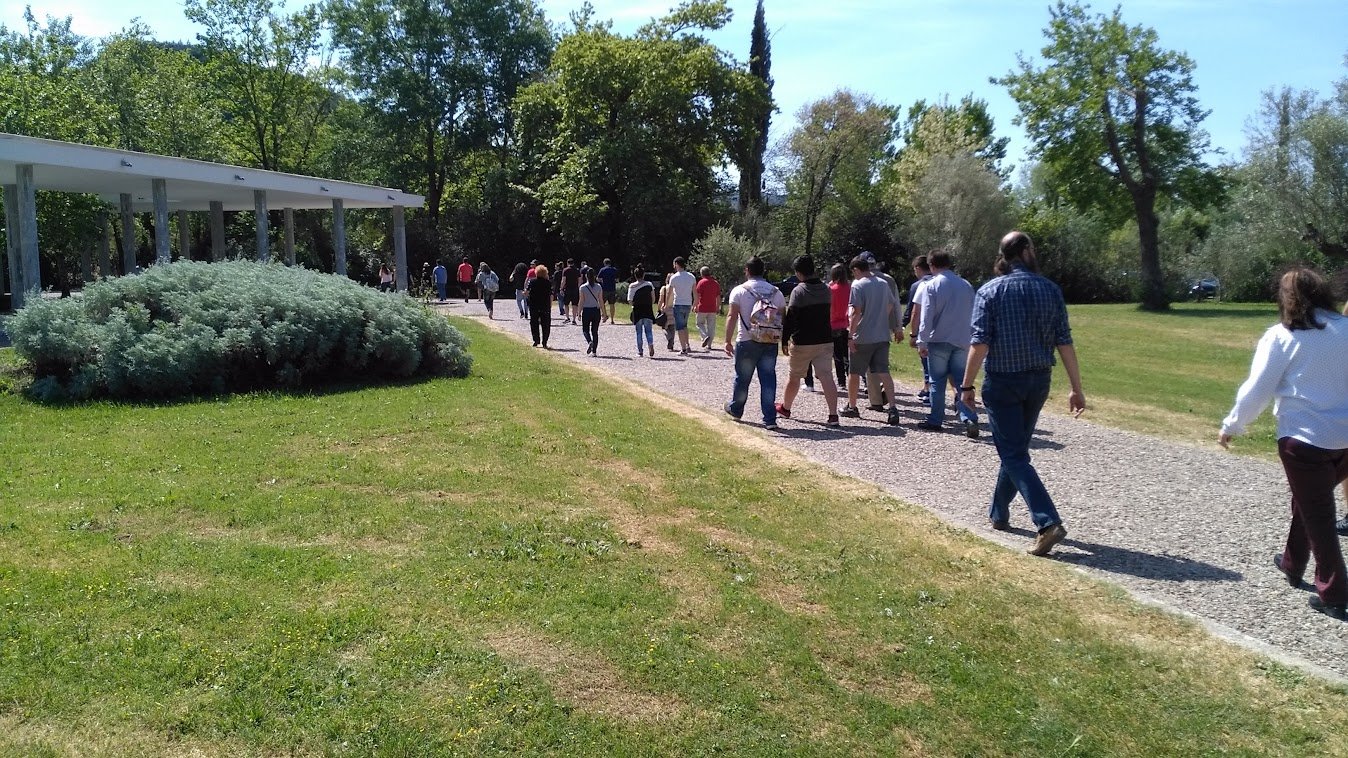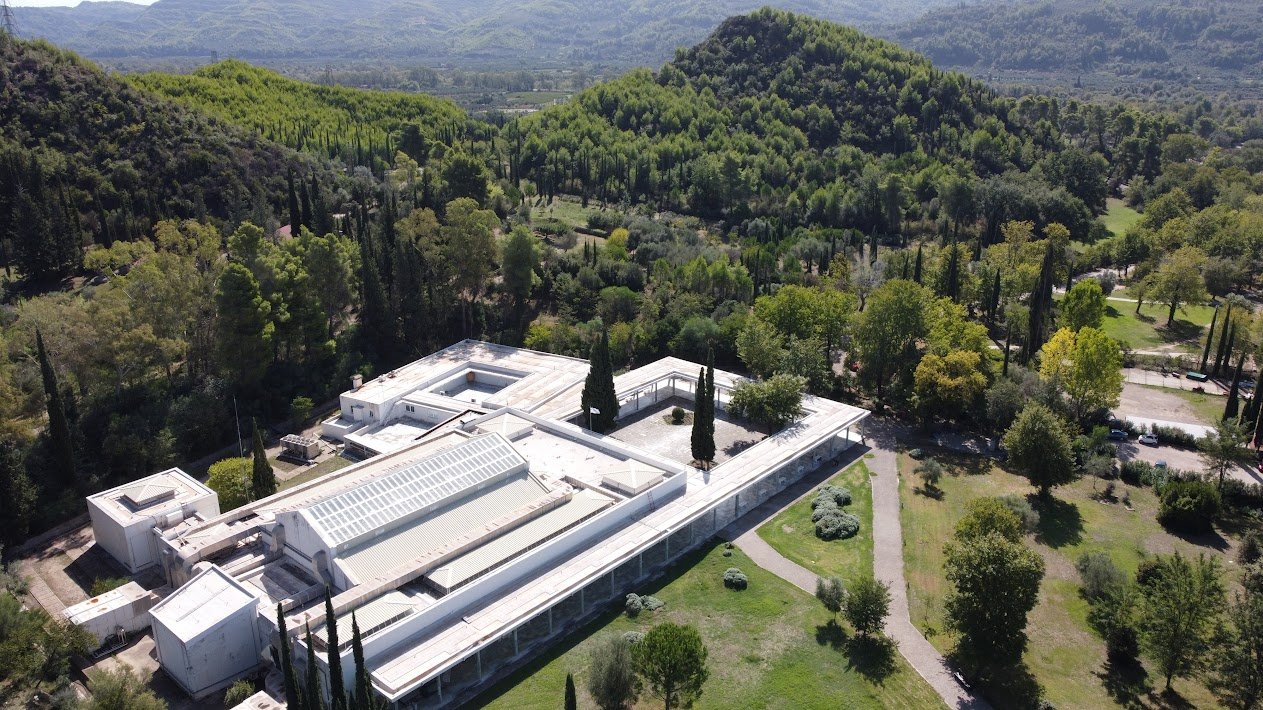
The first museum in Olympia, an elegant and unadorned Neoclassical edifice, was erected between 1883 and 1887, on a hillock to the northwest of the archaeological site. It was the home of the treasures unearthed from the renowned Sanctuary of Zeus for several decades.
Two Germans, Friedrich Adler and Ernst Curtius who prepared the five year programme of the first excavations of Olympia – they had officialy began in 1875 – were responsible for the final plan of the museum. Wilhelm Dörpfeld, who was responsible for supervising the excavations also took part in the display of the finds. 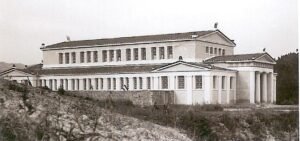
Overlooking the ruins of the Sanctuary, the Kronos hill, the Alpheus and the Kladeus rivers, the building was constructed by a very generous donation of 220,000 drachmas from the banker and national benefactor Andreas Syngros whose name was inscribed on the architrave (SYNGREION) above the main entrance.
The catastrophic earthquakes of 1953 caused much damage to the Syngreion. In the meantime, the progress of the excavations in the Altis and the new finds that gradually came to light made it imperative that a new larger museum be constructed, which would corresponded to the post-war era’s archaeological circumstances and requirements.
The Old Museum remained functional, but at the same time, from the late 1950s onwards, work began on the foundations of the New Archaeological Museum in the valley northwest of Kronos hill.
 The building, completed in the decade from 1960 to 1970, was based on a proposal by the architect Patroklos Karantinos.
The building, completed in the decade from 1960 to 1970, was based on a proposal by the architect Patroklos Karantinos.
The ground plan of the new museum followed the same rectangular layout of the Syngreion. Apart from a vestibule it contained a large central hall for the sculptures from the Temple of Zeus, around which nine other exhibition galleries were arranged in a U-shape.
Since the Olympic Games in Munich (1972) the New Archaeological Museum was completely ready with organised storage facilities, conservation workshops, Chalkotheke, and offices housing the Ephorate administration, and was receiving visitors, while at the same time, beginning in 1974, the work to re-exhibit the sculptures from the Temple of Zeus in the main hall was ongoing.
The antiquities were gradually transferred there to have newly discovered fragments affixed, to be reassembled with new joints made of a more durable material, and to have p laster casts made for teaching purposes.
 The exceptional for the period re-exhibition of the many various older and more recent votive off erings from the Sanctuary, organised in thematic and chronological order in the New Archaeological Museum of Olympia, which also contained a hall dedicated to the Olympic Games, was the result of an admirable collaboration of a staff of notable archaeologists and technicians under the direct supervision and responsibility of Nikos Yalouris, then Ephor and later Inspector General of Antiquities.
The exceptional for the period re-exhibition of the many various older and more recent votive off erings from the Sanctuary, organised in thematic and chronological order in the New Archaeological Museum of Olympia, which also contained a hall dedicated to the Olympic Games, was the result of an admirable collaboration of a staff of notable archaeologists and technicians under the direct supervision and responsibility of Nikos Yalouris, then Ephor and later Inspector General of Antiquities.

The task of restoration, reconstruction and re-exhibiting the pedimental and many other sculptures was undertaken by the remarkable sculptor Stelios Triantis and his wife Ismene – Aliki Stypsianou, who was Ephor of the museum at the time.
After the new exhibition arrangement in the Hall of the Pediments, whose measurements are almost the same as the original hall in the Syngreion, the Archaeological Museum of Olympia officially opened its doors to the public in 1982.
Twelve years later the statue of Nike of Paionios was newly exhibited in a room of her own. The splendid winged statue was once again restored to its pedestal, additional fragments were added, titanium rods were used to hold it together, and it was released from all plaster additions.
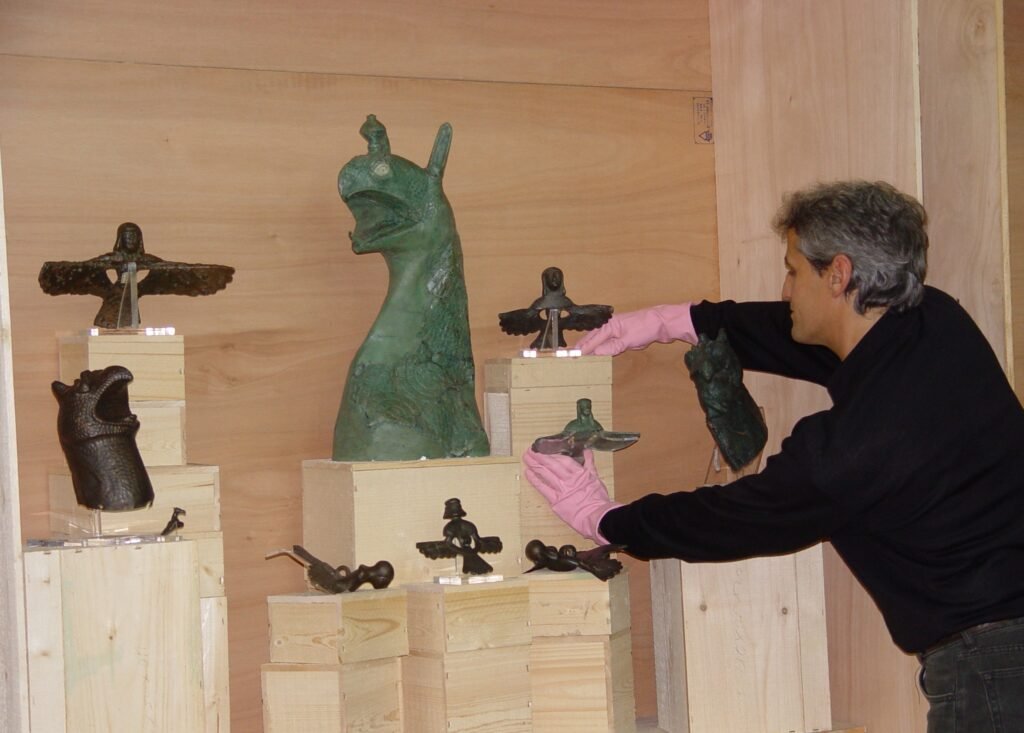
In the course of preparations in Greece, as well in Olympia, for the Athens Olympic Games of 2004, important improvement projects took place in both the archaeological site and in the modern town, which had been developed for tourism. However, the major project and benefit was the radical renovation of the museums of Olympia, which were literally re-established, according to the demands of contemporary museology.
There followed four years of feverish preparations until the new trio of museums in Olympia were inaugurated on March 24, 2004; the Archaeological Museum, the Museum of the History of the Olympic Games in Antiquity (Old Museum or Syngreion) and the Museum of the History of the Olympia Excavations (Old Ephoreion, west of the Syngreion) opened a new chapter in Olympia’s history.
In the Archaeological Museum the exhibition space, comprising 3500 square metres including the peristyle atrium, was renovated with the use of building technology.
The basic philosophy behind the original exhibits did not change, aiming on the one hand at showing the history of the famous Sanctuary over the centuries, and on the other at making visible the development of ancient art by reference to the panorama of votive offerings to the patron god Zeus, from prehistoric times and the origin of the cult of the god up to the first post- christian centuries, during which the Sanctuary was abandoned and forgotten.



